No one could have predicted 2020 would bring such dramatic changes. Civil unrest after the police killing of George Floyd in Minneapolis, coupled with a once-in-a-century pandemic, is accelerating social and economic changes around the country, including in the Richmond region.
Once the capital of the Confederacy, Richmond began creating a blueprint for the future last year with the renaming of Arthur Ashe Boulevard and the debut of Kehinde Wiley’s sculpture, “Rumors of War,” at the Virginia Museum of Fine Arts.
This summer, amid weeks of protest, Mayor Levar Stoney hired Newport News-based Team Henry Enterprises to remove several Confederate statues, most prominently along Monument Avenue. (This excludes the Robert E. Lee statue, which is state-owned. Gov. Ralph Northam plans to remove it also, pending resolution of litigation brought by some local homeowners.)
Other changes began in mid-March, when the COVID-19 pandemic made its way to Virginia, prompting Northam to declare a state of emergency and place restrictions on businesses and close schools.
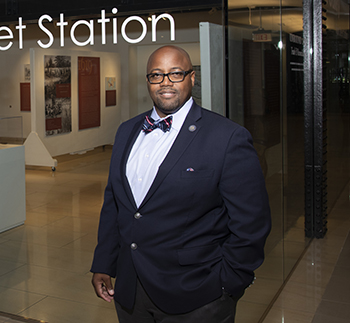
The coronavirus has created an enormous impact on the business climate in Richmond “due to the uncertainty of when and how people and businesses would resume ‘normal’ pre-pandemic activity and routines,” says Leonard L. Sledge, Richmond’s director of economic development.
Although businesses across the commonwealth have suffered financial misfortune, it was particularly severe in Richmond, where restaurants, craft brewers, hair and nail salons and other small businesses take up a considerable amount of real estate.
Christine Chmura, CEO and chief economist at Chmura Economics & Analytics, wrote in an Aug. 2 column for the Richmond Times-Dispatch that “it is going to be a slow recovery as long as social distancing and fear of contracting the virus continue.” The hospitality and leisure sector in the Richmond area lost 40%, or about 28,000, of its jobs between February and April, she said, and there’s a ripple effect of about 7,000 more people losing their jobs.
At the onset of the pandemic, the city formed a coalition of localities, economic development organizations, chambers of commerce, businesses, financial institutions and other interested parties throughout the Richmond region to get out critical information to help businesses respond to COVID-19.
One of the key outcomes of the coalition was the launch of ForwardRVA.com, an online resource to help businesses safely reopen and continue operating. “The coalition is an outstanding example of regional collaboration and the collective work done to support businesses throughout the region,” Sledge says.
As a means of support, the city’s economic development authority created a $1 million fund to start a disaster loan program for Richmond businesses. As of the end of July, 48 businesses received approval for $934,920 in loans, and the EDA said the loans would be converted to grants with the use of CARES Act funds, so businesses would not have to pay the money back.
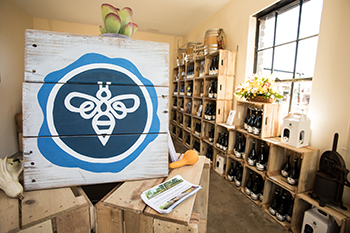
from the city of Richmond. Photo courtesy Richmond Region Tourism
Several industries are represented, but restaurants, breweries, tourism and retail dominate the list. Businesses that received the grants ranged from Blue Bee Cider, a cidery in the city’s popular Scott’s Addition area, to Dr. Jacqueline Johnson-Curl, a dentist with a family practice in North Side.
The city also partnered with more than 50 local restaurants to provide meals to on-duty first responders during the pandemic.
“This program allowed us to directly support the restaurant industry, which is an important part of our economy, and also support our public safety personnel,” Sledge says.
Using funding from the federal CARES Act (a $2.2 trillion economic stimulus bill signed into law in response to the economic fallout of the pandemic), the city is preparing to launch a $3 million grant program for small businesses that had financial losses due to COVID-19.
There still remains the lingering question of whether companies will reduce their physical footprint and adopt longer-term virtual work models or whether they will increase their physical footprint to allow for “effective social distancing in the workplace,” Sledge says. “I believe Richmond is positioned to benefit on either side of the spectrum.”
The protests that have taken place in the city during the past few months have also changed the face of business, resulting in more companies “large and small emphasizing the importance of equity and inclusion in their business practices,” Sledge says.
Area companies such as Altria Group Inc. and Dominion Energy Inc. are both making $5 million donations to address systemic racism and support social justice and equality. Other businesses are following suit.
“Whether it is the impact of COVID-19 or the protests in the city, businesses are ready and willing to move innovative solutions forward … and figuring out what they need to do to change to be successful,” Sledge says.
Lara Fritts, president and chief executive officer of Greater Richmond Partnership, is hopeful the upcoming year will see improvements in the economy.
This past fiscal year, Greater Richmond Partnership exceeded its “goals in [economic development] investment,” says Fritts. “We were on a roll, and then we saw it halt. Now we are starting to see activity pick back up.”
The industries seeing initial growth — manufacturers, data centers, food and beverage manufacturing — are key industry sectors for the region, which is great news, Fritts says, adding that she’s optimistic that projects put on hold will come back by the fourth quarter of this calendar year and “be ready to make decisions.”

Tourism takes a hit
In late January, The New York Times listed Richmond as one of 52 Places to Go in 2020. “Our restaurant and beer scene was driving our notoriety,” says Jack Berry, president and CEO of Richmond Region Tourism.
But then COVID-19 brought travel to a virtual standstill. Since May 31, the region’s hotel occupancy rate has been down 30%. “Everybody has been affected,” says Berry. “But in the Richmond region we are uniquely positioned better than most destinations.”
That prime positioning, he says, is thanks to the region’s four pillars of travel — family and friends, business, tourism and transient traffic. Each plays a strong role in bringing the area through difficult times.
“I go back to when 9/11 hit in 2001. It was a Tuesday and travel stopped completely. The following weekend we were sold out. We rebounded back within 12 months. When banks collapsed in 2008, it devastated travel. That took us five years to recover, but we came back faster than areas not dependent on those four pillars,” Berry says.
But unlike earlier disasters, it appears the coronavirus’ economic impact will continue to be felt, at least until a vaccine is produced and widely available.

The state allocated $866,000 in grants to destination marketing organizations in July though the Virginia Tourism Corp., including Richmond Region Tourism, which received $10,000.
The region is already seeing some forms of travel on the uptick. Sports tourism, for example, began picking up at the start of Phase Three of reopening. “This summer, we had over 30 different sporting events,” Berry says, adding he’s looking forward to the upcoming year.
“We will be ready when you are ready to travel,” he says, echoing the Virginia Tourism Corp’s statewide marketing message. “When you are comfortable with it, we want you back.”
Positive outlook in Henrico

“As strong as ever” is how Anthony Romanello, Henrico County Economic Development Authority’s executive director, describes the business prospects in Henrico. “As of July 17, we are managing 49 live prospects. It continues to be very active,” he says.
After COVID-19 hit, the county landed IT and professional consulting services firm ASGN Inc., its fifth Fortune 1000 company. The company is investing $5 million to move its corporate headquarters from Calabasas, California, to Henrico, where it plans to create 121 new jobs, with salaries averaging $106,000.
Henrico ended its fiscal year on June 30 with $163 million in private investment. “It was a huge year, but it’s important to give that some context,” says Romanello. “While we did land many exciting projects, there are a lot of businesses that are still struggling. We know there is a lot more work to do for businesses that have been impacted like restaurants, entertainment, hotel and the travel industry.”
Once the pandemic took hold, the authority started reaching out to all Henrico businesses to “let them know we were here,” Romanello says. In April, the EDA made a $2 million deposit with Virginia Community Capital, enabling relief loans to 42 Henrico businesses, including seven minority-owned businesses and 10 companies owned by women. Additionally, the county offered a microloan program for small businesses and offered extensions on real estate taxes and other fees.
Chesterfield rolls along
Chesterfield County’s active project list also doesn’t look a lot different from how it did before COVID-19. Logistics, distribution-based and light manufacturing leads are still strong in the county, as are food and beverage manufacturers. “We have the No. 1 manufacturer payroll in the area,” says H. Garrett Hart III, director of economic development. “We have seen positive demand for our manufacturers’ products. They have expanded production.”

Several of the county’s manufacturers are pivoting to produce personal protection equipment. “Our existing manufacturers and logistics companies are continuing to hire at a healthy rate,” Hart says.
The way the county is interacting with companies has changed in light of COVID-19. It is doing more virtual site visits, drone photography and screen-sharing with prospects. “In theory, we are trying to stay steady with the customer service we provide prospects,” says Matthew McLaren, senior project manager at Chesterfield Economic Development.
The business community in Chesterfield is resilient, Hart adds. “County businesses are being creative and using ingenuity to provide for customers.”
The county created a web page, chesterfieldbusiness.com/eats, to promote and help the local restaurant community. The county also launched a grant program for businesses that couldn’t get any other form of assistance. It was funded through the federal CARES (Coronavirus Aid, Relief and Economic Security) Act. “We are in the process of a second round of the program that opens up to businesses that may have gotten federal assistance but still had a tremendous need. Many of our businesses are hurting, especially service businesses like salons, hair [salons], gyms and restaurants,” says Karen Aylward, deputy director of economic development.
Hanover builds on success
Hanover County has been able to weather the COVID-19 storm with more than $500 million in economic development projects announced during the last two years, led by a December 2019 announcement from Wegmans Food Markets Inc. that it will build a $206 million regional distribution campus in Hanover, creating 700 jobs.

“We are really proud of that,” says E. Linwood Thomas IV, the county’s director of economic development.
The announcement was the state’s top distribution sector deal last year and contributed to Virginia’s Golden Shovel award last year from Area Development magazine, recognizing Virginia as a top state for job creation and investment.
Fiscal year 2020 was the county’s strongest year on record for “commercial construction permits, which totaled over $61 million, along with our most recent announcements, which will go into that pipeline for future development,” Thomas says. “Last year was our best year on record for net new jobs, which topped out at over 2,200. Even through the pandemic, we saw over 1,920 net new jobs for the fiscal year, which ended June 30.”
Nevertheless, the closure this year of Kings Dominion in Doswell has presented difficulties for the local economy. The amusement park employs about 4,000 seasonal workers and generated more than $5 million in tax revenue in 2018.
Still, other sectors are thriving. The county currently has more than 1 million square feet of speculative development underway, with about 60% already leased. “That shows the economy is still fairly strong,” Thomas says.
The pandemic has also seen the county pivoting more toward virtual economic development marketing efforts instead of face-to-face meetings. “We started doing drone videos and virtual site tours before COVID-19 hit,” Thomas says. “Visiting prospects has turned virtual, but we are still finding cost-effective ways to position the county for success.”
Subscribe to Virginia Business.





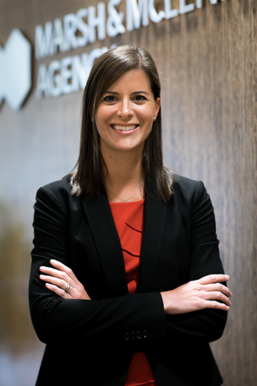
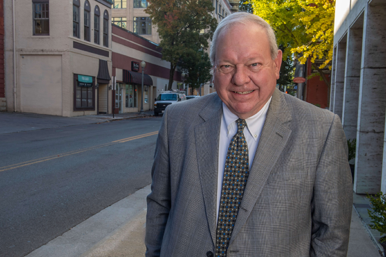
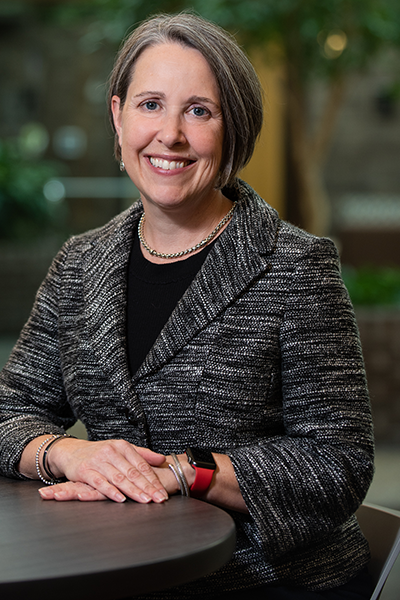 Cyberattacks can happen to anyone at anytime. “All businesses are at risk,” says Stephanie Peters, president and CEO of the Virginia Society of Certified Public Accountants (VSCPA).
Cyberattacks can happen to anyone at anytime. “All businesses are at risk,” says Stephanie Peters, president and CEO of the Virginia Society of Certified Public Accountants (VSCPA).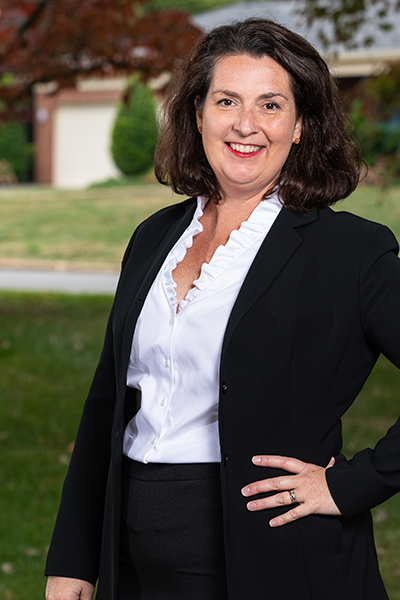 The organization had to rebuild from scratch. “You can imagine the cost,” he says, adding that if the right measures were in place, “they would have been able to successfully defend the attack.”
The organization had to rebuild from scratch. “You can imagine the cost,” he says, adding that if the right measures were in place, “they would have been able to successfully defend the attack.”